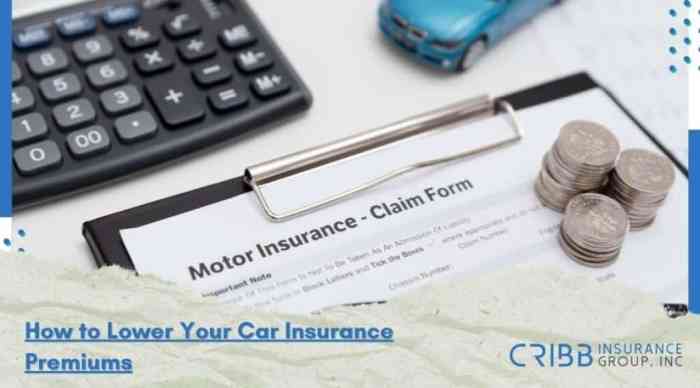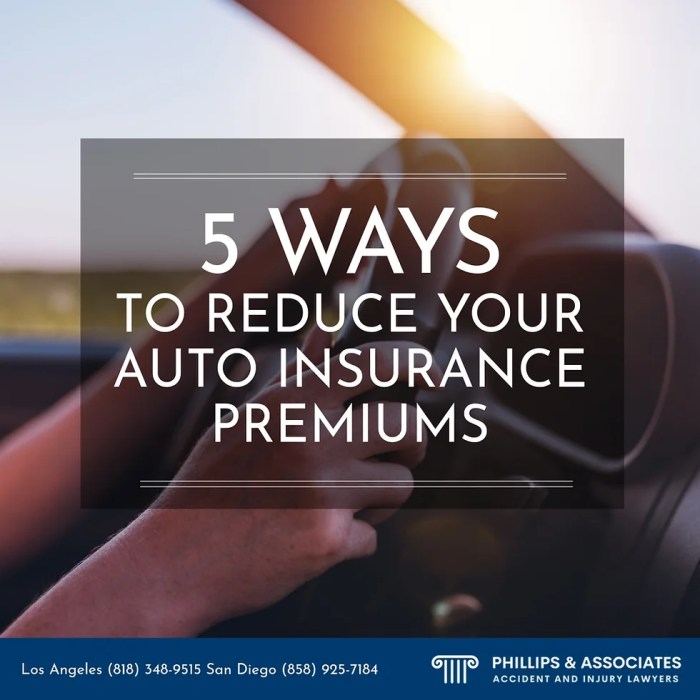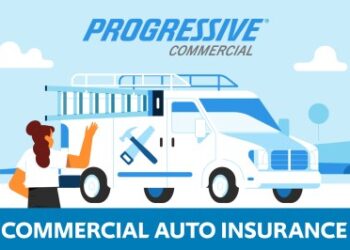Exploring the realm of Geico commercial auto insurance premiums, this guide delves into 5 effective strategies to help businesses save on insurance costs. From understanding key factors to optimizing coverage, this narrative promises an enlightening journey towards financial efficiency and risk management.
Factors Influencing Geico Commercial Auto Insurance Premiums
When it comes to determining your Geico commercial auto insurance premiums, several key factors come into play. Understanding how these factors influence the cost of your insurance can help you make informed decisions to lower your premiums and save money.
Vehicle Type
The type of vehicle you are insuring can have a significant impact on your Geico commercial auto insurance premiums. For example, insuring a larger, more expensive commercial vehicle will typically cost more than insuring a smaller, less expensive vehicle. Additionally, the age and condition of the vehicle can also affect insurance costs.
Driving Record
Your driving record is another crucial factor that can influence your Geico commercial auto insurance premiums. If you have a history of accidents or traffic violations, you may be considered a higher risk driver and could face higher insurance costs.
On the other hand, a clean driving record can help lower your premiums.
Coverage Limits
The coverage limits you choose for your Geico commercial auto insurance policy will also impact your premiums. Opting for higher coverage limits will typically result in higher premiums, while choosing lower coverage limits can help you reduce your insurance costs.
It's important to strike a balance between adequate coverage and affordability.
Location
Where you operate your commercial vehicle can also affect your Geico commercial auto insurance premiums. Urban areas with higher rates of accidents and theft may result in higher insurance costs compared to rural areas with lower risk factors. Factors like crime rates and traffic congestion can also play a role in determining your premiums.
Strategies to Lower Premiums
To optimize these factors for lower Geico commercial auto insurance premiums, consider taking defensive driving courses to improve your driving record, bundling multiple insurance policies for discounts, installing safety devices in your vehicles, and shopping around for competitive rates. By proactively managing these factors, you can potentially reduce your insurance costs while still maintaining adequate coverage for your commercial vehicles.
Utilizing Geico Discounts and Savings Programs

When it comes to lowering your Geico commercial auto insurance premiums, taking advantage of discounts and savings programs can make a significant impact on your overall costs. Geico offers various discount options specifically designed for businesses, allowing them to save money while still maintaining adequate coverage for their commercial vehicles.
Geico Discount Programs
- Multi-Vehicle Discount: Businesses with multiple commercial vehicles insured under Geico can qualify for a multi-vehicle discount, resulting in lower premiums for each vehicle.
- Safety Equipment Discount: Installing safety equipment such as anti-theft devices, GPS tracking systems, or dash cams in your commercial vehicles may make you eligible for a safety equipment discount.
- Good Driver Discount: If your commercial drivers have a clean driving record and no history of accidents or traffic violations, you can benefit from a good driver discount.
Qualifying and Maximizing Discounts
In order to qualify for these discounts, businesses need to meet specific criteria set by Geico. This may include ensuring all drivers have the necessary qualifications and training, maintaining a good claims history, or implementing safety measures in the vehicles.
To maximize discounts, it is essential for businesses to review their current policies, identify areas where discounts can be applied, and make the necessary adjustments to meet the requirements for each discount program. By taking proactive steps to qualify for these discounts, businesses can significantly reduce their commercial auto insurance premiums.
Comparison of Discount Options
When comparing different discount options offered by Geico, businesses should consider the potential savings on premiums and the requirements for each discount program. By evaluating the cost savings against the criteria for qualifying, businesses can determine which discount programs are most beneficial for their specific needs and budget.
Customizing Coverage to Lower Premiums
When it comes to commercial auto insurance, customizing your coverage can play a significant role in lowering your premiums. By tailoring your policy to suit your specific business needs, you can ensure that you are not overpaying for coverage that you may not necessarily require.
Adjusting Coverage Types and Limits
One way to lower your Geico commercial auto insurance premiums is by adjusting the types and limits of coverage included in your policy. For example, if your business operates in a low-risk area and your vehicles are used sparingly, you may opt for lower coverage limits to reduce your premiums.
On the other hand, if your business operates in a high-risk industry or area, you may need to increase your coverage limits to adequately protect your assets.
- Consider the specific needs of your business when selecting coverage types and limits.
- Review your current policy to identify any areas where coverage can be adjusted to better suit your needs.
- Consult with a Geico insurance agent to determine the most cost-effective coverage options for your business.
Examples of Customizing Coverage for Lower Premiums
Here are some scenarios where customizing your coverage can lead to lower Geico commercial auto insurance premiums:
- Reducing comprehensive and collision coverage on older vehicles that may not require full coverage.
- Opting for higher deductibles to lower your premium costs.
- Removing coverage options that are not relevant to your business operations.
Implementing Risk Management Strategies
Implementing effective risk management strategies is crucial for businesses looking to reduce the risks associated with commercial vehicles. By proactively identifying and addressing potential hazards, companies can lower the likelihood of accidents and costly claims, ultimately leading to lower insurance premiums.
Utilizing Driver Training Programs
One key strategy is to invest in comprehensive driver training programs for employees who operate commercial vehicles. By ensuring that drivers are well-trained in safe driving practices, companies can significantly reduce the risk of accidents and insurance claims. These programs can cover topics such as defensive driving techniques, vehicle maintenance, and handling adverse weather conditions.
- Implementing regular driver safety meetings to reinforce best practices.
- Utilizing telematics devices to monitor driver behavior and provide feedback for improvement.
- Rewarding safe driving behaviors through incentive programs.
Maintaining Fleet Vehicles
Regular maintenance of fleet vehicles is another important risk management strategy. Ensuring that vehicles are properly maintained can help prevent mechanical failures that could lead to accidents. By conducting routine inspections and addressing any issues promptly, businesses can reduce the likelihood of breakdowns and accidents on the road.
- Creating a maintenance schedule for each vehicle in the fleet.
- Training employees to perform basic vehicle inspections before each trip.
- Partnering with trusted mechanics and service centers for timely repairs and maintenance.
Implementing Safety Policies and Procedures
Establishing clear safety policies and procedures within the organization is essential for promoting a culture of safety among employees. By setting guidelines for safe driving practices, cargo handling, and emergency response protocols, businesses can minimize risks and create a safer work environment for everyone.
- Developing a comprehensive safety manual outlining expectations and procedures.
- Conducting regular safety audits to identify areas for improvement.
- Providing ongoing training to employees on safety protocols and procedures.
Reviewing and Updating Policy Regularly

Regularly reviewing and updating your commercial auto insurance policy is crucial to ensuring that you are getting the best coverage at the most affordable rate. By staying informed about policy changes and coverage options, you can take advantage of potential savings and avoid overpaying for unnecessary coverage.
Importance of Policy Review
- Policy changes: Insurance companies like Geico may update their policies or offer new discounts that could benefit your business.
- Market trends: Keeping up with market trends and competitor rates can help you negotiate better premiums.
- Business changes: As your business grows or changes, your insurance needs may evolve, requiring adjustments to your policy.
Steps to Review and Update Policy
- Set a regular schedule: Establish a routine to review your policy at least once a year or whenever there are significant changes in your business.
- Assess coverage needs: Evaluate your current coverage and determine if any adjustments are necessary based on your business operations.
- Compare quotes: Obtain quotes from different insurance providers, including Geico, to ensure you are getting the best rate for the coverage you need.
- Review discounts: Check for available discounts and savings programs that you may qualify for to reduce your premiums.
- Consult with an agent: Seek guidance from an insurance agent to help you understand your policy options and make informed decisions.
Ultimate Conclusion
In conclusion, mastering the art of lowering Geico commercial auto insurance premiums requires a strategic approach that balances risk management, policy customization, and staying informed about discounts. By implementing the tips Artikeld in this guide, businesses can navigate the complex landscape of insurance costs with confidence and savings.
FAQ Corner
How can my business qualify for Geico discounts?
To qualify for Geico discounts, businesses typically need to meet certain criteria such as having a good driving record, using safety features in their vehicles, or bundling multiple insurance policies.
Can adjusting coverage types lead to immediate savings on premiums?
Yes, adjusting coverage types can lead to immediate savings on premiums as businesses can tailor their insurance policies to match their specific needs, eliminating unnecessary coverage and costs.
What are some common risk management strategies that can lower insurance premiums?
Common risk management strategies include implementing driver training programs, conducting regular vehicle maintenance, and installing GPS tracking devices to monitor driver behavior and vehicle usage.












